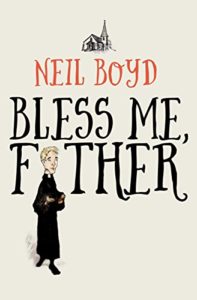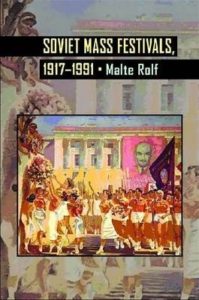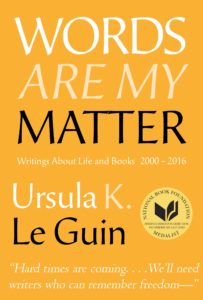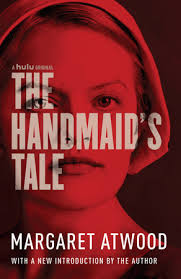Don’t read the second sentence of this post. Don’t read the sentence that comes before this one. In this world, we do not acknowledge italics. Italics are the only text there is. If you see something written in another way, avert your eyes, unsee and unread before it is too late. We have some leniency with foreigners, but really you should accustom yourself to seeing only one thing, to observing the boundary between our text and that of its neighbors. You must choose one line, one mode, one city.
If you struggled to navigate that paragraph, you’ve already got a handle on the conceit that drives China Miéville’s 2009 novel, The City & The City. The story takes place in an Eastern European city of Miéville’s own intricate invention, or really two cities: Besźel, marked by nationalist paranoia and economic decline, and Ul Qoma, flush with foreign investments and world-renowned archaeological sites. The cities physically intertwine, but do not psychically overlap; a Besź child whose ball accidentally veers into Ul Qoma cannot run to fetch it, nor can an Ul Qoman cut across their Besź neighbor’s lawn to reach their own car, parked on the Ul Qoman curb. The boundaries between the cities are enforced both by the psychological conditioning—whose product Miéville describes as the act of “unseeing”—which all inhabitants receive from early childhood onwards, and by the mysterious organization known as Breach. Citizens of both metropolises are subject to Breach’s implacable judgment, and anyone who commits the crime of perceiving or interacting with the opposite city vanishes into the clutches of its black-clad enforcers. Any legitimate contact between Beźel and Ul Qoma must take place through a series of bureaucratic intermediaries: embassies, websites whose domains end in .bz or .uq, international telephone calls.
And it is within this twisting, Byzantine landscape that Inspector Tyador Borlú, of Beźel’s Extreme Crime Squad, finds himself tasked with investigating a murder that becomes far more complicated than it initially appears. The novel begins with Borlú’s arrival at the crime scene, where he commences his examination with the observation that “Nothing is still like the dead are still. The wind moves their hair, as it moved hers, and they don’t respond at all.” This moment encapsulates the strategy that Miéville will employ throughout the rest of The City & The City: we are tied to Borlú’s gaze and voice, permitted to see only what he sees (and, generally, only after we’ve already learned what he thinks about the situation at hand). It’s a smart move, particularly in the context of a novel that draws equally on the traditions of two disparate-seeming genres: fantasy and crime fiction. A narrator whose perspective and knowledge are necessarily limited, and who performs sometimes-unreliable interpretive work on the page, can at once provide the type of worldbuilding information that’s vital for readers navigating the realms of the unreal, and help construct the shadowy, paranoid atmosphere so essential to noir. In his role as de facto guide and host, Borlú can both feed us an aside about Beźel’s DöplirCaffés, Jewish-Muslim coffeehouses with a long history in the city’s former ghettos, and half-obscure the fact that he routinely commits small acts of Breach, mentioning that “I always wanted to live where I could watch foreign trains.”
I won’t say much about the investigation itself, other than that, as it progresses, Borlú must journey from Beźel to Ul Qoma, and reevaluate the assumptions and alliances he’s held for years. As the story progresses, this increasingly takes the form of Borlú hunting down stories about yet a third place, a city between the cities. Miéville calls this mythic third city Orciny (a name I couldn’t help but read as a phonetic nod to Ursula K. Le Guin’s own imaginary Eastern European country, Orsinia), and though we never see or visit it, its in-between nature comes to dominate the narrative. Sometimes Orciny is a menacing presence, one that stalks Borlú and his fellow-investigators with deadly precision, and sometimes it appears as a source of hope, a symbol of unification in a setting defined by its fractures. Ultimately, it embodies both.
It would be easy to read The City & The City as a political allegory, a fable about the ways in which many of us ignore those (refugees, homeless people, the visibly disabled and mentally ill) who don’t comfortably fit into the comfortable realms we forge for ourselves. But there are no easy binaries in this set of worlds, no one city that partakes entirely of the moral or the affluent; citizens of both Ul Qoma and Besźel grapple with racism, poverty, and addiction, and neither metropolitan government has a monopoly on corruption or red tape. (And, for what it’s worth, Miéville himself characterizes this reading as simplistic.) Rather, The City & The City enacts a threefold warning: our own worlds are endlessly complex; we ignore other modes of existence to our detriment and at our peril; the most interesting, productive, and dangerous psychological and physical places are those which bridge and breach.
Yet this method of rejecting binarist thinking proves both a contradictory and an uncompromising vision; although those who inhabit the gaps between the cities find some level of community with one another, they are also utterly cut off from those who exist firmly in Besźel or Ul Qoma. And, in many cases, it is these people who end up violently enforcing the separation which they themselves have abandoned. It’s a far cry from Le Guin’s call, in The Left Hand of Darkness, for individual relationships that can shatter destructive binaries through their emotional intimacy, attaining a dynamic that moves beyond “We and They,” or “I and It,” to “I and Thou.” But it is very much in keeping with Miéville’s larger body of work—think of Isaac from Perdido Street Station, who’s full of iconoclastic swagger at the outset, but eventually flees the nightmare he’s helped create—and it speaks to the gaps that Le Guin’s I-Thou ideal occasionally skirts. Not all struggles can be resolved through intimacy and mutual understanding. Sometimes, the sinister, bureaucratic Powers that Be win out; often, this happens because revolutionaries decide that life as higher-ranking members of the system isn’t so bad, after all.
In The City & The City, Miéville remains a puzzle-maker, a trickster, a consummate dungeon master. As such, his interest lies less in the isolated workings of each city—or each genre—that he’s working with, than in their interstices and sometimes-monstrous hybrids, and Borlú proves a fitting narrator for this exploration. You can trust me (or, if not, at least trust the people who run the World Fantasy, Arthur C. Clarke, and Hugo Awards, all of which The City & The City won) when I tell you that this one’s more than worth your time.





